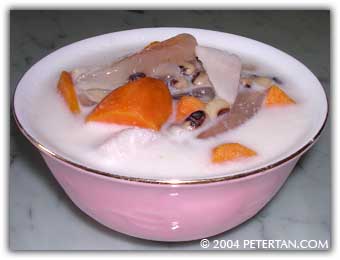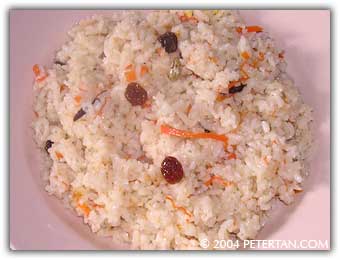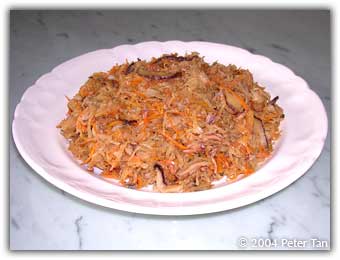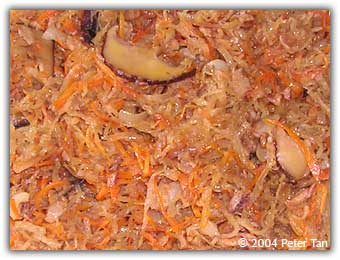
Bubur cha-cha is a popular Nyonya dessert of sweet potato, yam, black-eyed beans, tapioca jelly and sago pearls in thick coconut milk. As a child, whenever it was cooked at home, I would eat bowl after bowl. Those times, the word “cholesterol” was never heard of. Preparing the bubur cha-cha is time consuming as each ingredient has to be steamed or cooked separately. Thus, it was not cooked often which made it a much yearned for delicacy.
I had bubur cha-cha at Cynthia’s house last night, skilfully prepared by Robert, who is an accomplished cook in his own right. He added water chestnut, too, in addition to all the usual ingredients. Incidentally, I have already bought the stuff for making the same dessert when I went grocery shopping earlier and had planned to cook it today which I did. I threw caution to the wind and indulged again today with an extra large bowl. Now, the pangs of guilt are slowly settling in. It will be a very long time again when I commit another dietary sin like this. It was fun while it lasted though.
Bubur Cha-Cha
(This recipe is adapted from The Star’s Nyonya Flavours cookbook.)
Ingredients:
300g yam, diced
300g sweet potato, diced
80g black-eyed beans, soaked in hot water for 2 hours
100g sago pearls
100g tapioca starch
boiling water
3 cups thick coconut milk
100g sugar, or to taste
3 pandan leaves, knotted
Steam yam and sweet potato separately until soft (about 20 minutes) and set aside.
Remove the beans from the water it had been soaking in and cook in boiling water until soft. Remove and set aside.
Cook sago pearls in a pot of boiling until they become translucent (about one half hour). Remove and set aside.
Using a spatula, add boiling water to the tapioca starch in a mixing bowl, bit by bit until it becomes doughy. Mix well. When it can be handled with bare hands, roll into 1cm thickness and cut into strips. Cook in boiling water until they become translucent (about one half hour). Remove and soak in iced water until needed.
Put coconut milk, sugar and knotted pandan leaves into a pot and bring to a gentle boil, stirring continuously. Add yam, sweet potato, black-eyed beans, tapioca jelly and sago pearls and mix well. Serve hot or cold.




